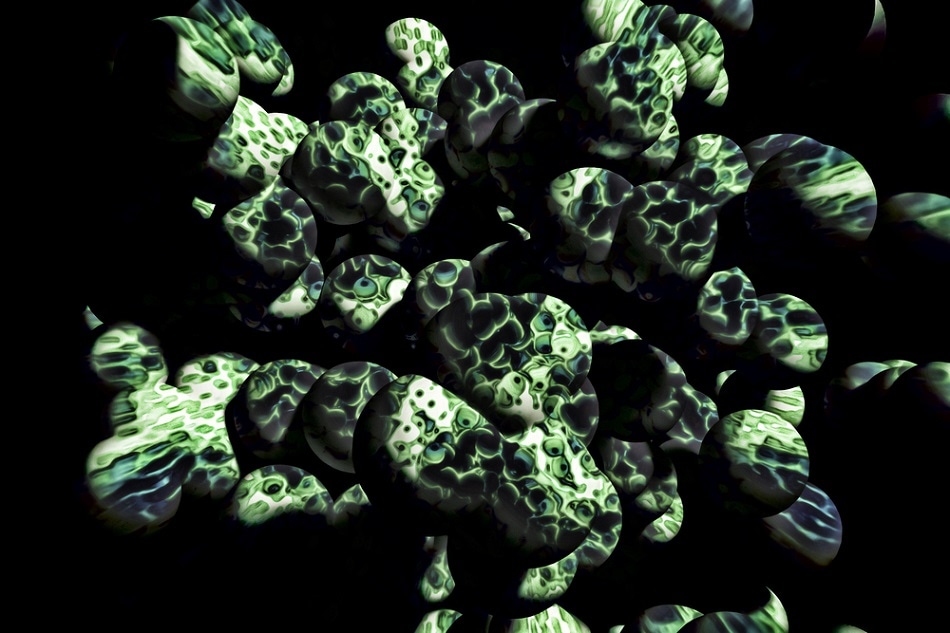 GiroScience/ Shutterstock.com
GiroScience/ Shutterstock.com
When a drug enters the body, it doesn’t generally target a particular part of the body. Paracetamol, for example, affects the whole body but its effects are felt at the source of pain.
Likewise, cancer drugs can be imprecise; some enter the bloodstream to treat cancer at various anatomical points in the body, some are aimed at a particular region but even then, if a tumor is besieged by a toxic drug, the healthy tissue surrounding the target can also be affected.
Many treatments for cancer – and other conditions – are becoming more targeted with the use of smart drug delivery systems, many based on nanoparticles. Researchers in Australia hope to improve cancer drug delivery with a new method to encourage polymer molecules to self-assemble into non-spherical nanoparticles.
Very little in nature is perfectly spherical. Most biological structures like cells, bacteria and viruses come in a variety of shapes including tubes, rods, and squashed spheres, or ellipsoids. But it has proved very difficult for scientists to synthesise particles that are not perfectly round.
Professor Pall Thordarson, School of Chemistry, The University of New South Wales (UNSW)
The Scientists, which included Professor Martina Stenzel, PhD candidate Chin Ken Wong and Alexander Mason, have developed a means of controlling the shape of polymer molecules so that they self-assemble into non-spherical nanoparticles. It is hoped that this advance could improve the delivery of toxic drugs to cancerous tumors.
The team worked with polymer molecules containing a water-soluble portion, and a non-water-soluble portion that self-assemble into round hollow structures known as polymersomes in solution. Polymersomes are becoming a powerful new tool to deliver drugs to the desired part of the body due to their high stability, chemical versatility and the ease with which molecules on their surface can be changed.
“The membrane structure of polymersomes also offers good versatility in the sense that it can be programmed to respond to certain chemical or physical stimuli, or modified with biological components,” the Researchers write in their paper published in Nature Communications. “The full potential of polymersomes has been hindered by a lack of versatile methods for shape control.”
The UNSW team’s novel chemical design sees a non-water-soluble perylene polymer group – that is a polycyclic hydrocarbon group – added to the membrane of the polymersome. Perylenes were chosen because of their strong tendency to aggregate in water, and because their aggregation behaviour can easily be observed by means of UV–Vis and fluorescence spectroscopy.
By changing the concentration of water in the solvent, the Researchers found they could control the extent of solvation/desolvation of the aromatic perylene surfaces on the polymer, and could adjust the shape and size of the polymersome.
It's a straightforward but elegant solution which we feel has great potential for making a wide range of complex polymer structures inspired by nature.
Professor Martina Stenzel, School of Chemistry, The University of New South Wales (UNSW)
The team employed cryogenic-transmission electron microscopy – the technique which was recently awarded the 2017 Nobel Prize in Chemistry – to determine how the polymer molecules were packed together in solution. The technique involves studying the sample at cryogenic temperatures, usually around -196°C, that of liquid nitrogen. Microscopy revealed that many of the polymersomes were either ellipsoidal or tubular shaped.
Our breakthrough means we can predictably make smart polymers that shift their shape according to the different conditions around them to form tiny ellipsoidal or tubular structures that can encapsulate drugs. We have preliminary evidence that these more natural-shaped plastic nanoparticles enter tumor cells more easily than spherical ones.
Professor Pall Thordarson, School of Chemistry, The University of New South Wales (UNSW)
Disclaimer: The views expressed here are those of the author expressed in their private capacity and do not necessarily represent the views of AZoM.com Limited T/A AZoNetwork the owner and operator of this website. This disclaimer forms part of the Terms and conditions of use of this website.